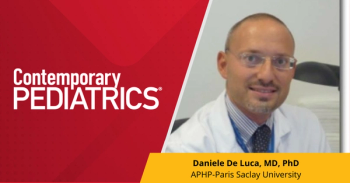
Insurance type plays role in impact of preterm birth and maternal morbidity
Risk factors for the dual burden of severe maternal morbidity and preterm birth differ significantly by insurance type across sociodemographic and perinatal considerations in the state of California.
A previous study by the authors published in the Journal of Maternal-Fetal & Neonatal Medicine in 2020 found that roughly 25% of women with severe maternal morbidity also had preterm birth.1
“In that paper, we saw some differences in risk for dual burden by insurance type and wanted to explore those findings more thoroughly,” said Alison El Ayadi, ScD, MPH, an associate professor of ob-gyn and reproductive sciences at the University of California, San Francisco, who was a co-author of both studies.
The current study estimated relative risks of dual burden by maternal sociodemographic and perinatal characteristics in the 2007 to 2012 California birth cohort dataset, stratified by insurance type and comparing effects across insurance categories.2
Dual burden ranged from 0.36% of privately insured births to 0.41% of uninsured births.
Obstetric comorbidities, multiple gestation, parity and birth mode were linked to the largest risks across all insurance types, but the effect magnitude differed.
The adjusted relative risk (aRR) of dual burden associated with preeclampsia superimposed on preexisting hypertension spanned from 9.1 for the privately insured to 15.9 for the uninsured.
In contrast, the aRR of dual burden associated with cesarean birth for primiparas ranged from 3.1 with Medi-Cal to 5.4 with other insurance, and for multiparas from 7.0 to 19.4, respectively.
“We expected that obstetric comorbidities, parity and mode of birth would have the largest impact on uninsured women, followed by women with Medi-Cal, compared to those with private insurance,” El Ayadi told Contemporary OB/GYN®.
But the investigators were surprised to find that uninsured women were the only group without an advanced maternal age-related increase in dual burden.
The authors are uncertain why the risk of dual burden connected to multiple gestation for uninsured women was lower compared to other insurance categories. “We know, though, that access to assisted reproductive technology (ART) is associated with type of insurance coverage and with multiple births,” El Ayadi said. “These inter-relationships may play a role in our findings.”
The study also found no significant Black-White disparity in dual burden risk among uninsured women. “As health disparities by race/ethnicity reflect the impact of exposure to chronic stress from racism, and health insurance is another rough proxy measure for socioeconomic status, it is possible that this finding reflects the greater level of disadvantage among the uninsured population overall,” El Ayadi said.
The variances that the study found in the effect size for the sociodemographic and pregnancy-related risk factors by insurance type “suggest that important differences in care quality exist by insurance payor,” El Ayadi said.
Moreover, the study indicates that in order to improve maternal and neonatal health, it is paramount that all birthing mothers and infants receive high-quality peripartum care and support, regardless of insurance payor.
“The improvements in maternal outcomes that are now being demonstrated with Medicaid expansion are a great policy example of how structural change can have an impact,” El Ayadi said.
Despite such progress, it is challenging to disentangle the relationship between type of insurance at the individual level and clinic or hospital quality because many entities serve populations with either mostly private or mostly public coverage.
“Future studies should aim to determine the extent to which these types of differences are related to coverage policies of insurers versus inadequate resources for hospitals serving more disadvantaged populations,” El Ayadi said.
Reference
- Lyndon A, Bear R, Gay CL, et al. A population-based study to identify the prevalence and correlates of the dual burden of severe maternal morbidity and preterm birth in California. J Matern Fetal Neonatal Med. 2021 Apr;34(8):1198-1206. doi:10.1080/14767058.2019.1628941
- El Ayadi AM, Baer RJ, Gay C, et al. Risk factors for dual burden of severe maternal morbidity and preterm birth by insurance type in California. Matern Child Health J. Published online January 18, 2022. doi:10.1007/s10995-021-03313-1
Newsletter
Access practical, evidence-based guidance to support better care for our youngest patients. Join our email list for the latest clinical updates.









